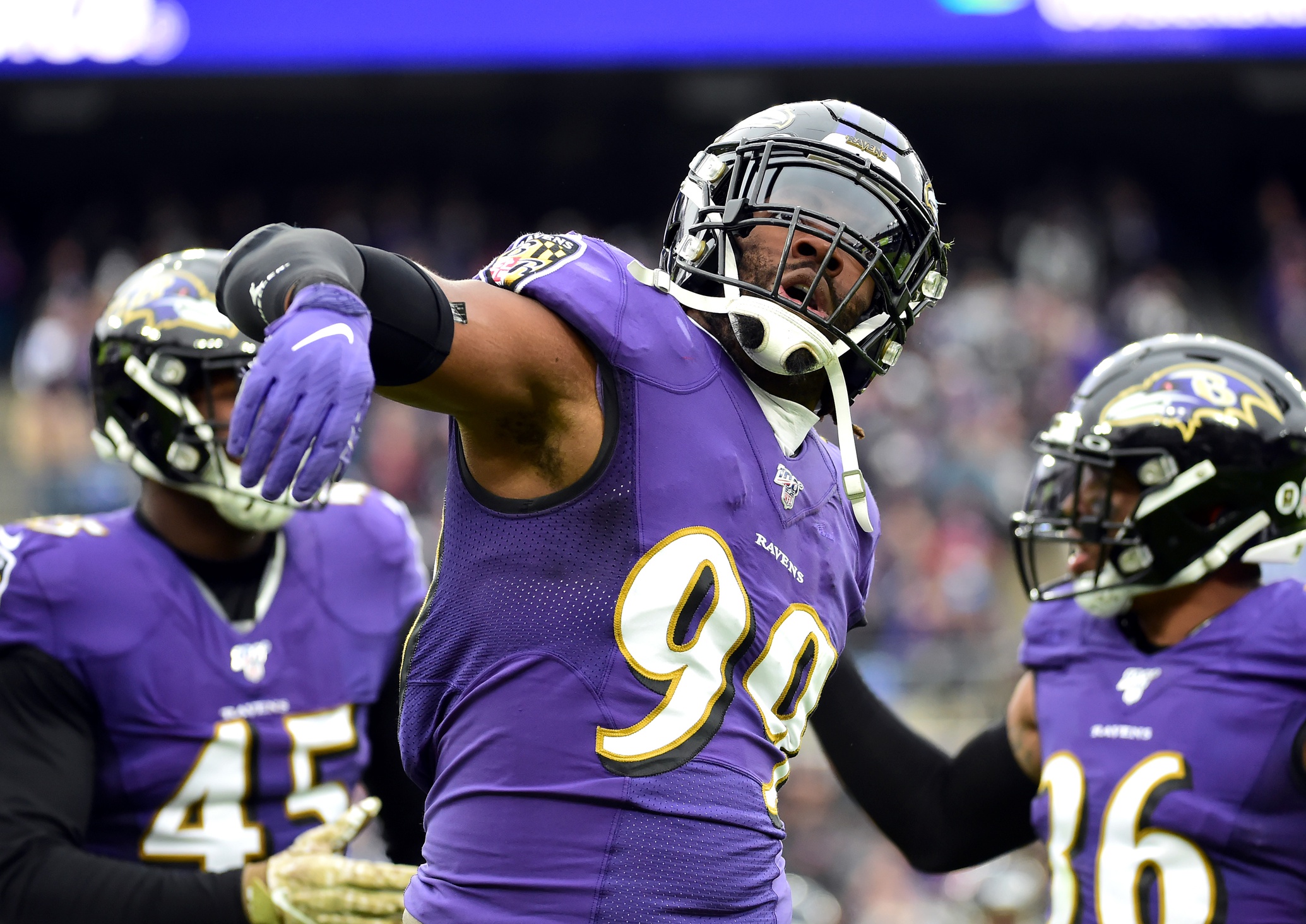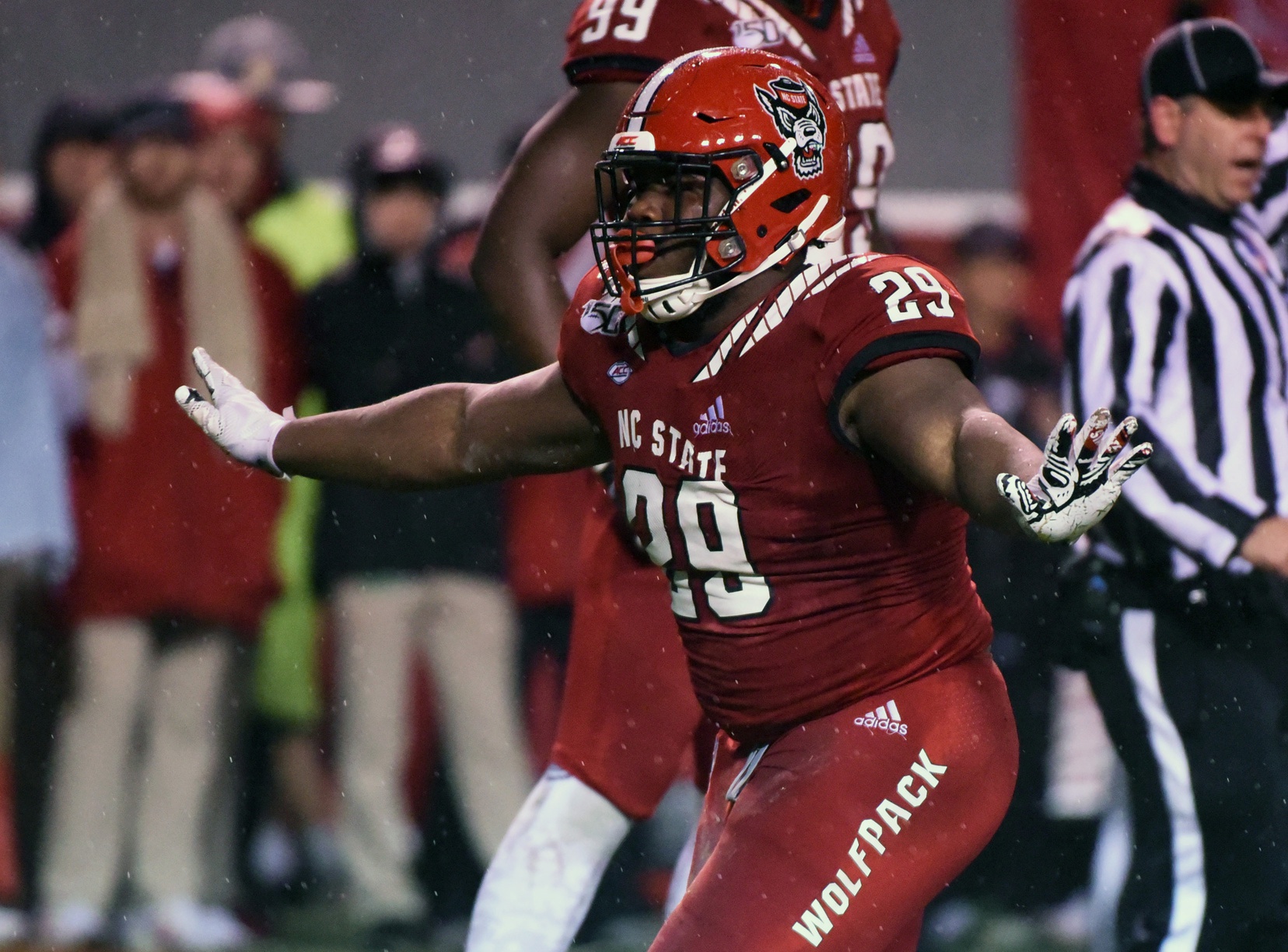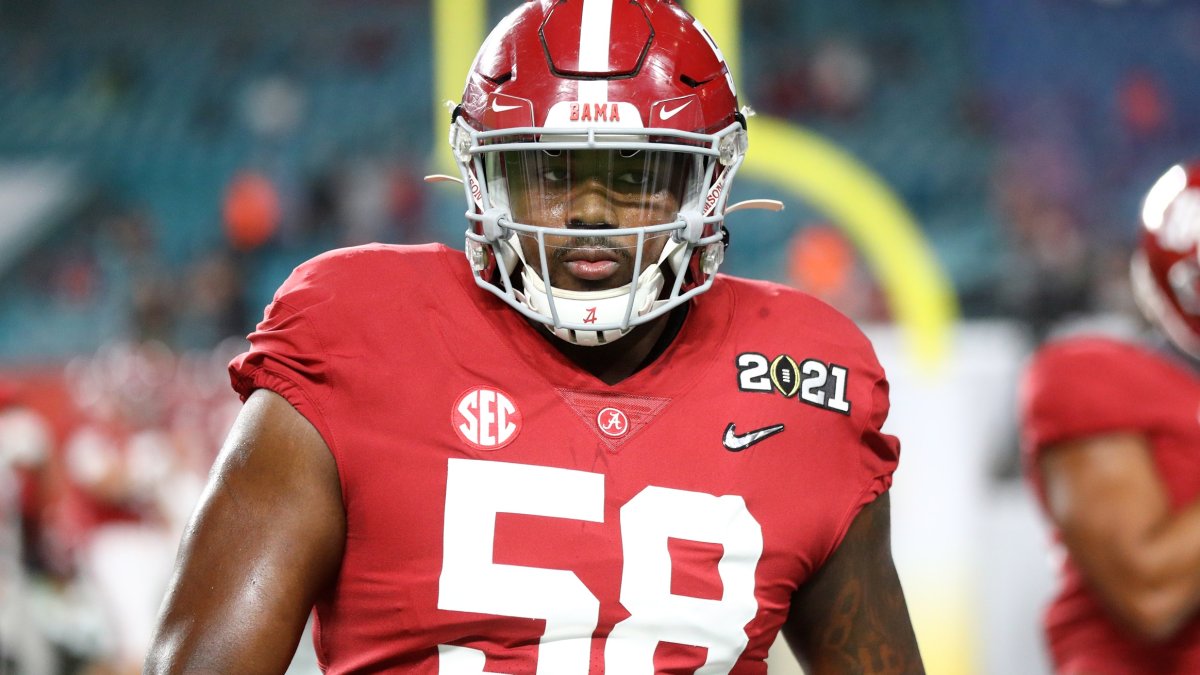We’ve already looked at the most improved offensive lines to this point in the offseason. It’s now time to turn to their defensive counterparts in the trenches. Some teams focused on free agency to add more talent up front, while several others hit the position heavily in the 2021 NFL Draft. Regardless of how they improved, every team on this list got better in a noticeable way along the defensive line.
These are my most improved defensive lines as we surface from draft week.
More of PFF's 2021 NFL Draft tools here:
2021 NFL Draft Big Board | 2021 NFL Draft Guide | 2021 NFL Draft Stats Export | NFL Mock Drafts | NFL Mock Draft Simulator
1. New England Patriots
The front seven was a focus for the Patriots in a busy free agency period. Not only did they retain Lawrence Guy and Deatrich Wise Jr., but they also brought in outside talent.
In the case of the Miami Dolphins’ release of Kyle Van Noy, it isn’t exactly “outside” talent. Van Noy spent three-plus years with the Patriots from 2016 to 2019 before signing a multi-year deal with the Dolphins prior to the 2020 season. The best season of his career came in 2019 with New England when he earned an 84.2 PFF grade in his first year as a full-time edge defender.

Matthew Judon was the centerpiece of the Patriots' defensive free agent additions, though. Judon was productive in Baltimore’s attacking defense, recording at least 35 pressures in four consecutive seasons. His grading profile hasn’t quite matched his production — largely due to a high number of unblocked and cleanup opportunities as a pass rusher — but it should be a relatively smooth transition for him from Baltimore to New England.
New England followed up that free agency period by spending two of its first three draft picks on a penetrating interior defender and another option to compete for snaps on the edge.
Christian Barmore at Pick 38 represents tremendous value for the Patriots, even after the trade-up. He was ranked over 40 spots higher than any other interior defender on PFF’s Big Board (12th overall). You don’t have to look any further than his performance in the College Football Playoff against Notre Dame and Ohio State to see what he’s capable of. Barmore recorded 12 pressures and turned in an 87.2 PFF grade across those two games.
Ronnie Perkins was another great value in our eyes at Pick 96. He’ll likely have to begin his career as a designated pass rusher until he adds more strength to his game, but he can contribute in that pass-rush specialist role. He has legit speed off the edge, which helped him earn a 90.4 pass-rushing grade with Oklahoma in 2020. The Patriots have quickly built a deep group on the edge, allowing them to rotate through multiple options next season.
2. Cleveland Browns
The Browns have done a solid job of adding pieces to their defense this offseason, and the defensive line is no exception.
The edge defender spot opposite Myles Garrett was a question mark coming out of the 2020 campaign due to Olivier Vernon being unlikely to re-sign with Cleveland after suffering a late-season injury. The Browns addressed that position in free agency with one-year deals handed out to Takkarist McKinley and Jadeveon Clowney. Both signings carry some risk, but they qualify as good bets for Cleveland to take on short-term contracts.
McKinley never lived up to his first-round billing with the Atlanta Falcons, but he was a solid pass rusher across his first three years in the NFL, earning 65.0-plus pass-rushing grades in each season. Clowney should be the guy who takes most of the snaps on the edge, though.
It’s easy to forget the kind of dominant force Clowney can be when healthy because he has struggled to stay on the field these past two seasons with the Seattle Seahawks and Tennessee Titans. Clowney has still earned an 81.6 PFF grade since 2019, ranking 18th among 112 qualifiers. He’s one of the best run defenders at the position and a more disruptive pass-rusher than his sack numbers may indicate.
Cleveland also added former Eagle Malik Jackson in free agency and Tommy Togiai, the No. 83 player on PFF’s Big Board, at Pick No. 132 in the 2021 NFL Draft. Togiai is a candidate to outperform his draft position early in his career. He tested well at his Ohio State Pro Day and has an impressive bull rush for someone his size. Don’t forget that 2020 free agent acquisition Andrew Billings is also slated to return from injury to bolster the interior.
3. New York Jets
This improvement came almost entirely from two free agent signings for the Jets — Carl Lawson and Sheldon Rankins.
Lawson might just have been the best pass-rusher available in free agency this offseason. He ranks in the 96th percentile among all edge defenders in pass-rush grade on true pass sets since entering the league in 2017. And Lawson was one of just five qualifying edge defenders to record a pass-rush win rate over 20% in 2020. He joined Joey Bosa, T.J. Watt, Khalil Mack and Jerry Hughes on that list. Lawson should provide the Jets a legitimate threat to challenge offensive tackles off the edge, something they haven’t had in some time.
Rankins' addition isn't as high-caliber, but he’s an intriguing player to throw into the mix alongside Quinnen Williams, Folorunso Fatukasi and John Franklin-Myers. Rankins talked this offseason about how he finally feels as healthy as he did back in 2018 after several injuries sidetracked him the past few years. He finished that 2018 season with a 79.0 overall grade. And his contract with New York looks like a steal if he can return to that form.
The losses of Tarell Basham and Jordan Jenkins in free agency don’t hurt all that bad after those two additions and some smaller moves of signing Vinny Curry and drafting Jonathan Marshall late. The Jets' defensive line should be vastly improved in 2021. It’s clear that new head coach Robert Saleh is looking to build up his defensive front just like the San Francisco 49ers did when he was there.
4. Detroit Lions
Is anyone surprised that the new regime in Detroit spent its first three draft picks on players who will contribute in the trenches? First-year head coach Dan Campbell is looking to establish a culture, and there’s a lot to like about what the Lions did on Days 1 and 2 of the 2021 NFL Draft.

Detroit's interior defensive line ranked 30th in PFF grade during the 2020 season, ahead of only the Houston Texans, Arizona Cardinals and Dallas Cowboys. They’ve since added former Los Angeles Rams defensive tackle Michael Brockers in free agency, along with Washington 3-technique Levi Onwuzurike and N.C. State nose tackle Alim McNeill.
Onwuzurike was highly productive in a rotational capacity for the Huskies back in 2018. He earned a 90.8 PFF grade on just under 400 defensive snaps for the season. His progress stalled in 2019 before he opted out of the 2020 season, but there is certainly a high end to chase with his explosiveness and twitch.
McNeill was PFF’s DT2, behind only Barmore, and is the rare nose tackle who has enough quickness and athleticism to potentially offer value as a pass rusher. His run defense and ability to hold up against double teams are already established, as well. McNeill finished the 2020 season with a 92.1 run-defense grade for the Wolfpack.
Detroit’s first three picks last week were a blueprint on how to build through the trenches.
5. Buffalo Bills
The Bills drafted two big edge defenders in Gregory Rousseau (37th on PFF’s Big Board) and Carlos Basham Jr. (42nd). Neither is expected to step into an immediate starting role due to Jerry Hughes, Mario Addison and A.J. Epenesa already filling those spots. But both provide the Bills some much-needed youth and depth along the defensive line; Hughes and Addison are both 32 years or older.
Rousseau was a late faller in the draft process after opting out of the 2020 season and not testing all that well at his Miami Pro Day. He has a freakish frame and an intriguing combination of length and flexibility. Rousseau will likely be best utilized as a moveable piece within Buffalo’s defense, someone who can take advantage of mismatches on the interior.
Basham is a powerful, explosive defensive end out of Wake Forest. He has the potential to be an every-down 4-3 defensive end who can push the pocket in the passing game, especially if he adds a more consistent bull rush at the NFL level. Basham earned 80.0-plus PFF grades in each of 2018 and 2019 before taking a step back this past season for the Demon Deacons.
Those two will likely be brought along somewhat slowly, just as Epenesa was in 2020, but Buffalo is now set up to not take any steps back when Hughes and Addison move on.
Honorable mentions: Indianapolis Colts, Cincinnati Bengals and Tennessee Titans
The Colts addressed a thin edge defender group by adding Kwity Paye in the first round and Dayo Odeyingbo in the second round, accounting for the loss of Denico Autry and the likely loss of Justin Houston in free agency.
Cincinnati downgraded from Lawson to Trey Hendrickson in free agency, but they did add several players in the draft who are capable of contributing in their defensive line rotation — Joseph Ossai, Cameron Sample and Tyler Shelvin.
Lastly, PFF is going to be lower on the Titans' incoming group of defensive linemen and linebackers because we’re not as high on Bud Dupree. There’s a disconnect between his production and grading profile that can be partially attributed to a favorable situation in Pittsburgh.
The additions of Dupree and Autry will have to help offset losses of Clowney (who was their most effective pass rusher last season when healthy) and DaQuan Jones in free agency. Fourth-round pick Rashad Weaver looked like tremendous value later on before news broke of an assault charge following the draft.
All three teams improved along the defensive line, particularly if viewing the situation from a long-term approach. I just don’t think they immediately improved as much as the five teams listed ahead of them.



 © 2024 PFF - all rights reserved.
© 2024 PFF - all rights reserved.